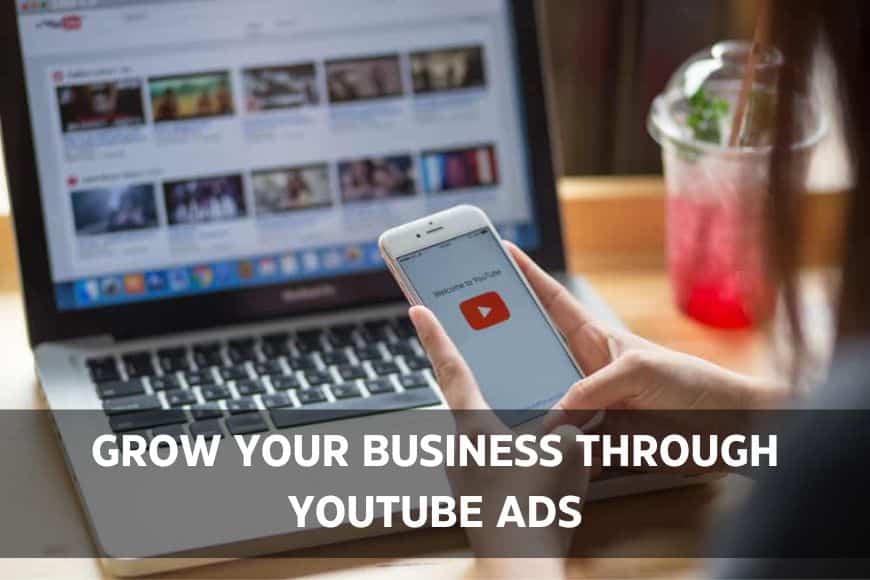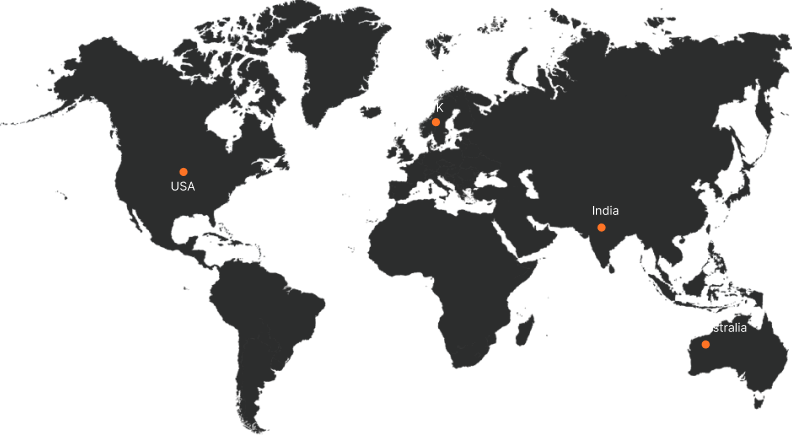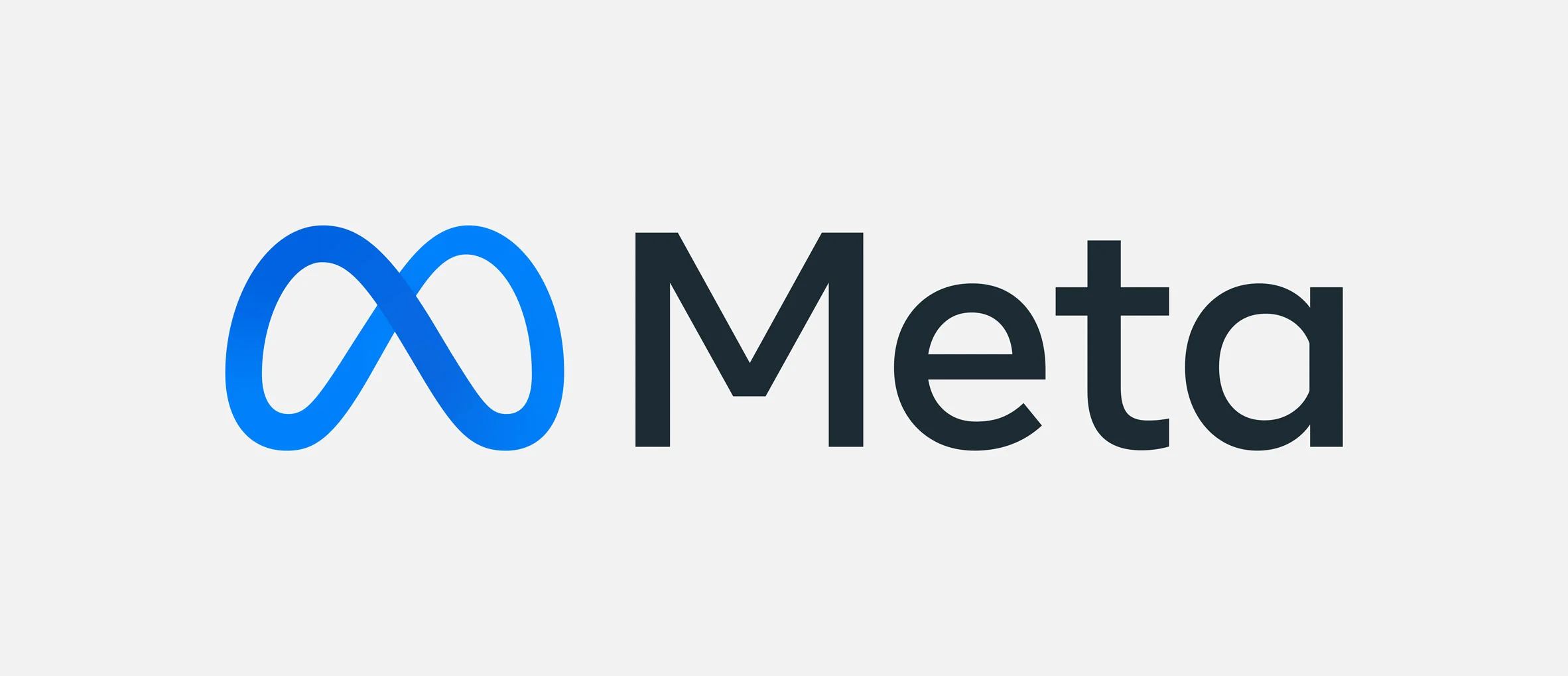How To Grow your business with YouTube ads

Easily connect with potential customers as they search, browse or engage with video content on YouTube. Take the first step now to see tangible results and grow your business with YouTube ads.
YouTube Advertising
YouTube Ads serves as a robust online advertising platform for businesses aiming to connect with their target audience on YouTube, the second most frequented website globally, boasting over 2 billion active users.
These video ads seamlessly integrate across YouTube, leveraging the platform’s extensive reach. Given Google’s ownership of YouTube, the advertising features align closely with those of Google Ads, with a notable distinction – they’re video-based. Ads have the flexibility to appear before, during, or after a viewer’s chosen video. While some formats allow viewers to skip after a few seconds, others are non-skippable. The pricing model for YouTube ads can be pay-per-view (PPV) or pay-per-click (PPC), depending on factors such as length and placement.
Exploring YouTube Ad Options
Before delving into your YouTube ads marketing strategy, it’s crucial to familiarize yourself with the various ad formats available on the platform.
1. Video Discovery Ads:
YouTube Discovery Ads are prominently featured on key pages of the platform, including the Home page, search query results page, and YouTube watch pages as related videos. These ads enhance visibility, engagement, and traction for individuals or brands. For instance, when you enter a search query, Discovery Ads may appear on the search results page.
2. TrueView In-stream Skippable Ads:
Among the most common YouTube ads, TrueView In-stream Skippable Ads allow users to skip after 5 seconds. Advertisers are charged when viewers either watch the ad for at least 30 seconds or engage with the ad’s call-to-action (CTA). YouTube recommends these ads be 12 to 360 seconds long. They play before a video, chosen based on the viewer’s search term, and advertisers only pay under specific conditions.
3. Non-Skippable In-Stream Ads:
These ads can appear at any point during a video and cannot be skipped. Their duration ranges from 15 to 20 seconds. Non-skippable in-stream ads are displayed for videos that are at least 10 minutes long, with a 5-second countdown before the ad starts. Advertisers are charged on a pay-per-click (PPC) basis.
4. Bumper Ads:
Bumper Ads are short, non-skippable ads that last a maximum of six seconds. Despite their brevity, they can be effective in promoting a brand, service, or product.
5. Overlay Ads:
For a non-intrusive advertising approach, Overlay Ads are ideal. These ads hover at the bottom of the video, similar to in-stream video ads. They offer a subtle way to convey your message without disrupting the flow of the video content.
By understanding and strategically utilizing these YouTube ad formats, advertisers can tailor their campaigns for optimal impact and engagement.
Why Choose YouTube for Your Advertising Needs?
At this year’s Google Marketing Live, the spotlight was on visual content, with Google introducing the exciting new feature of advertising in YouTube Shorts. Let’s delve into the compelling reasons to consider YouTube for your advertising efforts.
1. Exposure:
YouTube stands as the world’s second-largest search engine. Placing your ads here ensures a massive reach, tapping into a vast audience actively searching for content.
2. Sales Impact:
A staggering 70% of consumers have made purchases inspired by products they encountered in YouTube ads. This highlights the platform’s effectiveness in driving tangible business results.
3. Brand Identity Building:
YouTube videos offer a unique canvas for crafting distinctive brand experiences. They allow you to showcase your business’s personality, creating a lasting impression on your audience.
4. Data-Driven Insights:
YouTube analytics goes beyond the basics, providing a wealth of data. Gain insights such as the specific points where viewers disengage. Explore YouTube Studio reports that offer valuable information not found in Google Ads analytics.
5. Remarketing Opportunities:
Leverage the power of remarketing by targeting users who have previously engaged with your videos on YouTube or within the Google Display Network. This strategic approach keeps your brand at the forefront of their minds.
Choosing YouTube as your advertising platform opens doors to a world of opportunities, from broadening your reach and driving sales to building a strong brand identity. The platform’s analytics tools offer nuanced insights, empowering you to refine your strategies for maximum impact. Plus, with the added feature of advertising in YouTube Shorts, you can stay ahead in the evolving landscape of visual content.
Enhancing Your YouTube Video Advertising Strategy
Once your YouTube campaign is live, it’s essential to sustain momentum by incorporating these effective practices.
1. Think Beyond Demographics:
While targeting based on age, location, or gender can be beneficial, consider focusing on behaviors and interests for higher-quality leads. Understanding your potential YouTube audience allows you to exclude underperforming ad topics and align your ad with relevant pages on the Google Display Network. You can also target individuals who have previously engaged with your company.
2. Be Direct with Calls to Action (CTAs):
Incorporate specific CTAs in your YouTube ads to guide viewers towards desired actions, such as visiting your site, requesting more information, signing up for an event, or making a purchase. Avoid generic CTAs like “click here” and opt for more explicit prompts, enhancing overall engagement. Including limited-time special offers creates a sense of urgency. For longer ads, utilize an end screen to reinforce the desired action.
3. Set Up Conversion Tracking:
Implement tracking codes on your website to assess post-click activity following interactions with your YouTube ads. This data identifies high-performing ads, enabling you to optimize spending on the most effective content. Learn which CTAs drive valuable activities, such as form submissions or sales, and adjust your strategy accordingly.
4. Understand the Bidding Process:
YouTube ad costs are determined by ad type and performance. For skippable ads, charges occur when viewers click on your CTA, watch for at least 30 seconds, or view the entire ad for shorter durations. Non-skippable and bumper ads are charged per 1,000 impressions (CPM), while TrueView video discovery ads are charged when someone clicks to watch, regardless of viewing duration (CPV). Your actual cost is slightly above the second-lowest bid. Tailor your bids to audience specificity, testing to find the optimal bid amount.
5. Monitor Metrics:
Familiarize yourself with essential metrics to track campaign performance. View rate and CPV are key indicators, with a view defined as watching for at least 30 seconds or to the ad’s end (whichever is shorter). A high view rate suggests effective video content and targeting. Regularly tracking metrics across different ads provides insights into top-performing content, aiding budget allocation decisions. Adjusting your bid strategy, targeting, and video creative based on performance data can enhance overall results.
Understanding YouTube Ad Pricing
YouTube employs two primary ad pricing models: Cost-per-Click (CPC) and Cost-per-View (CPV). These models determine the cost of YouTube ads based on user actions, providing flexibility to align with your advertising goals.
1. Cost-per-Click (CPC):
In the CPC pricing model, you incur charges when a user clicks on your ad. This model is ideal for campaigns where the primary objective is to drive direct engagement and interactions.
2. Cost-per-View (CPV):
Opting for the CPV model means you pay when users either interact with your ad or watch it for at least 30 seconds (or the entire ad duration if it’s shorter than 30 seconds). This model is well-suited for campaigns focused on building brand awareness.
YouTube allows you to choose between CPC and CPV based on your specific ad goals and campaign subtype. For instance:
– If your goal is to enhance brand awareness, the CPV model is the preferred choice.
– If your aim is to drive website traffic, the CPC model is more suitable.
By understanding these pricing models and aligning them with your objectives, you can optimize your YouTube ad strategy to achieve the desired outcomes for your campaign.
How to advertise on YouTube
Crafting a successful YouTube Ads campaign involves more than just creating compelling video content. Here’s a step-by-step guide to ensure you make the most of your efforts:
1. Link Google Ads to Your YouTube Channel:
Initiate your YouTube Ads journey by linking your YouTube account to your Google Adwords account. This integration is pivotal as YouTube runs its advertising through Google Ads.
2. Create and Upload Your Video Ad:
Producing a YouTube video doesn’t require advanced equipment. Utilize your smartphone or stock imagery. Edit your video using free programs, keeping in mind time constraints based on your chosen ad format. Upload the finalized video to your YouTube channel, selecting a suitable ad format aligned with your objectives.
3. Create a YouTube Ad Campaign
Access Google Ads to create your YouTube ad campaign. Define your ad goals and designate the campaign type as “Video.”
4. Choose Your YouTube Ad Format:
Depending on your video’s objectives, choose the appropriate YouTube ad format. Consider your ad goals, and refer to the available formats mentioned earlier.
5. Set up your Budget, Schedule Video, and Bid Strategy:
Define your budget, set a schedule, and choose a bid strategy in Google Ads. Your budget impacts ad visibility, while the bid strategy determines its spending pattern. Google Ads offers helpful resources to guide you in setting an effective bid strategy.
6. Select Locations, Languages, and a Target Audience:
Target your ad more precisely by specifying locations, languages, and your target demographic. This is particularly useful for local businesses and those operating in multilingual markets.
7. Set Keywords, Topics, and Placements:
Further refine your targeting by specifying keywords, topics, and placements relevant to your ad. Choose topics aligned with your audience’s interests and include keywords within that topic area for precision.
8. Enter the Link to Your Video:
Paste your YouTube display URL into the designated section in Google Ads to seamlessly integrate your video into the campaign.
9. Track Performance and Conversions with Google Ads:
Leverage Google Ads to monitor the performance of your ads. If you’ve set up conversion tracking, track performance metrics to optimize your marketing allocation.
Get Your YouTube On:
YouTube ads, when utilized effectively, can boost brand awareness and serve as a powerful marketing tool. To achieve the best results, it’s advisable to explore the expertise of dedicated YouTube marketers available on platforms like Trycyfer. Consider hiring top-notch professionals from the leading digital marketing agency in India who can offer assistance with video creation, marketing setup, and performance tracking. Their specialized knowledge can make a substantial difference in optimizing your YouTube advertising strategy.











